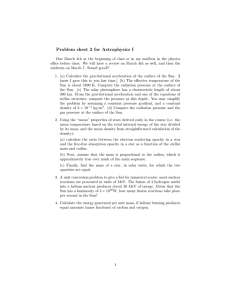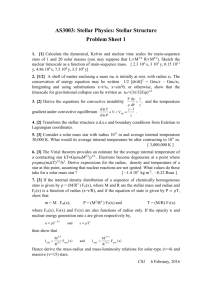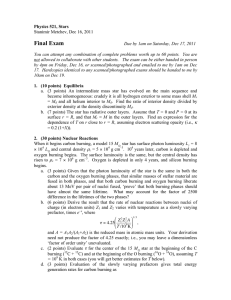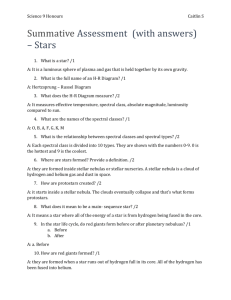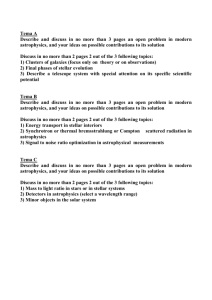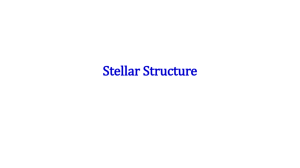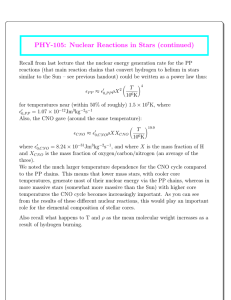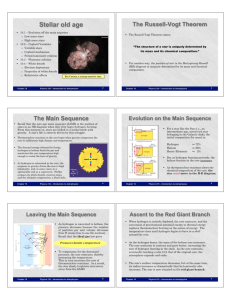Problem Set 2
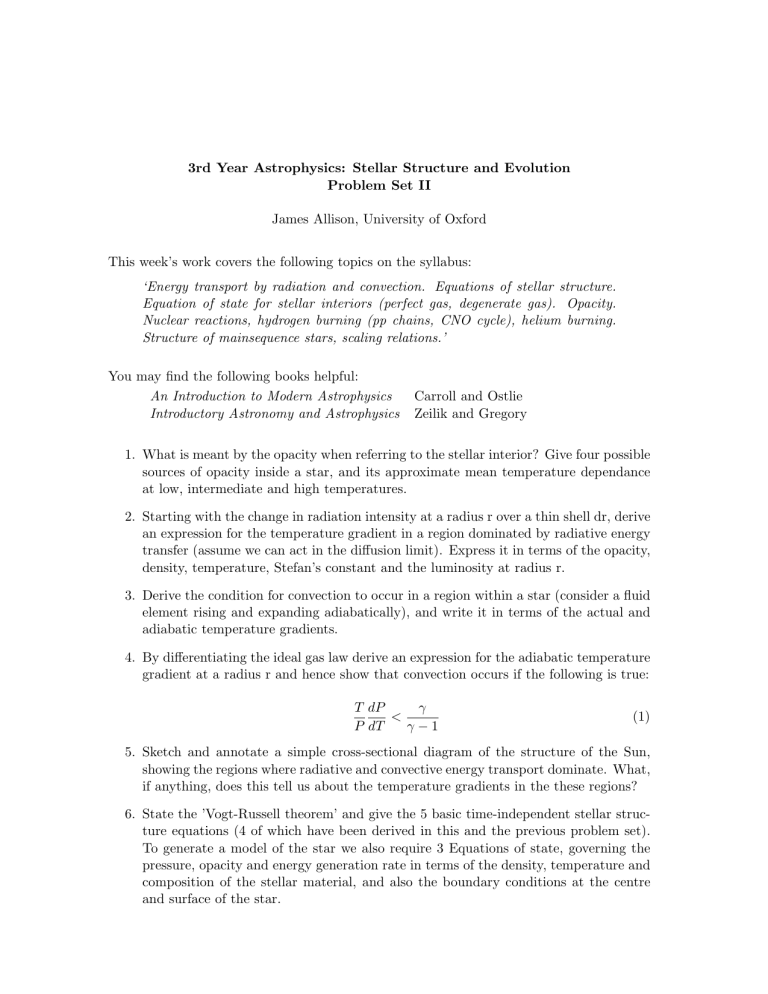
3rd Year Astrophysics: Stellar Structure and Evolution
Problem Set II
James Allison, University of Oxford
This week’s work covers the following topics on the syllabus:
‘Energy transport by radiation and convection. Equations of stellar structure.
Equation of state for stellar interiors (perfect gas, degenerate gas). Opacity.
Nuclear reactions, hydrogen burning (pp chains, CNO cycle), helium burning.
Structure of mainsequence stars, scaling relations.’
You may find the following books helpful:
An Introduction to Modern Astrophysics Carroll and Ostlie
Introductory Astronomy and Astrophysics Zeilik and Gregory
1. What is meant by the opacity when referring to the stellar interior? Give four possible sources of opacity inside a star, and its approximate mean temperature dependance at low, intermediate and high temperatures.
2. Starting with the change in radiation intensity at a radius r over a thin shell dr, derive an expression for the temperature gradient in a region dominated by radiative energy transfer (assume we can act in the diffusion limit). Express it in terms of the opacity, density, temperature, Stefan’s constant and the luminosity at radius r.
3. Derive the condition for convection to occur in a region within a star (consider a fluid element rising and expanding adiabatically), and write it in terms of the actual and adiabatic temperature gradients.
4. By differentiating the ideal gas law derive an expression for the adiabatic temperature gradient at a radius r and hence show that convection occurs if the following is true:
T
P dP dT
<
γ
γ − 1
(1)
5. Sketch and annotate a simple cross-sectional diagram of the structure of the Sun, showing the regions where radiative and convective energy transport dominate. What, if anything, does this tell us about the temperature gradients in the these regions?
6. State the ’Vogt-Russell theorem’ and give the 5 basic time-independent stellar structure equations (4 of which have been derived in this and the previous problem set).
To generate a model of the star we also require 3 Equations of state, governing the pressure, opacity and energy generation rate in terms of the density, temperature and composition of the stellar material, and also the boundary conditions at the centre and surface of the star.
Give the Pressure equation of state for a stellar region with contributions from the thermal (ideal gas) and radiation pressures.
In very late stages of stellar evolution we often find that the star is supported by an electron (or neutron) degeneracy pressure. Derive an expression for this pressure in terms of the number density of the electrons (look back at your notes for Statistical
Mechanics from the 2nd year, and in particular revise the Chandrasekhar mass for a
White Dwarf and Neutron Star).
7. List the reaction steps of PP-chain hydrogen burning inside a star such as the Sun
(including the PPI, PPII and PPIII chain branches and their relative importance in the Sun). Which is the slowest step in the centre of the Sun and hence sets the timescale for the whole reaction sequence?
In some stars, for example Red Giants, the CNO cycle is a significant reaction mechanism for hydrogen burning. List the steps of this sequence, and the elements that act as catalysts. What is a good source of carbon and oxygen inside a star?
Describe the triple-alpha process of nuclear helium burning in stars and the optimum conditions for this to occur (temperature and density). At which stage of stellar evolution does helium burning occur in the core of a star like the Sun?
8. Now answer the 4 finals questions attached and omit any book work that you feel has already been sufficiently covered in your previous answers.
